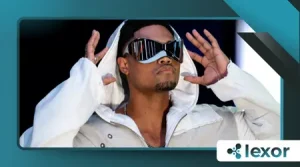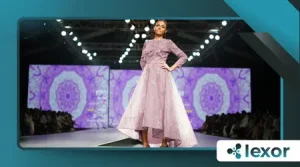How VR Is Used in Fashion Design and Runway Shows

The intersection of haute couture and cutting-edge technology defines a new paradigm, profoundly changing the creative process and global consumption.
How VR Is Used in Fashion Design and Runway Shows is a question whose answer unfolds across digital ateliers and immersive spectacles.
Virtual Reality (VR) is no longer a futuristic concept; it is an indispensable tool reshaping the aesthetics, sustainability, and accessibility of the fashion industry today.
This powerful technology is forging a compelling, more efficient, and undeniably more exciting future for design and presentation.
Why is Virtual Reality Transforming the Fashion Design Process?
VR technology revolutionizes the initial design stages, offering a potent alternative to traditional methods.
Designers now utilize VR and 3D modeling software to prototype garments digitally, saving significant resources.
This allows for rapid iteration and manipulation of fabric textures, drape, and fit in a dynamic, constraint-free virtual space. It’s like having an infinitely stocked, waste-free design studio inside a headset.
Creating a virtual prototype drastically reduces the need for physical samples. This shift aligns perfectly with the industry’s critical push toward greater sustainability.
Less material waste, fewer courier shipments, and a minimized carbon footprint result from digital first design.
The environmental benefits alone justify the technological investment, signaling a responsible evolution.
Designers can view and manipulate garments on virtual avatars with precise body measurements. This capability ensures greater accuracy in fit and sizing before any fabric is cut.
VR prototyping allows designers to experiment boldly without the financial risk associated with physical experimentation.
Read more: Voice, Gesture & Spatial Commands: The Next Frontier for Smart Homes
It unlocks a realm of aesthetic possibilities previously limited by physics and budgets.
How Does VR Enhance the Runway Show Experience?

The traditional runway show, often exclusive and geographically constrained, is being redefined by immersive VR experiences.
VR transports the audience beyond the limitations of a physical venue, democratizing the coveted front-row seat. Viewers worldwide can now experience the spectacle with an unprecedented sense of presence.
++Virtual Reality in Hospitality: Enhancing Guest Experiences
A VR fashion show is an interactive, 360-degree event that transcends a simple live stream. Attendees use a headset to enter an entirely fabricated world where the laws of nature are optional.
The environment itself becomes an extension of the collection’s narrative, a stage for impossible creativity. Who needs gravity when your design philosophy is ethereal?
The immersive quality allows for deep audience engagement with the collection’s details.
Viewers can virtually walk the runway alongside the models, examining the stitching, texture, and movement of a garment up close.
This granular view surpasses the fleeting glance afforded by a typical show, enhancing appreciation for the designer’s craft.
What Are Some Innovative Examples of VR in Fashion?
A luxury house might create a VR experience where an avatar of the viewer can “touch” the digital fabric. This sense of tactile presence enhances the emotional connection to the virtual garment.
++Exploring Virtual Reality’s Role in Personalized Learning
This technique of sensory immersion is a powerful tool for brand storytelling and product visualization.
Consider the recent virtual catwalks that took place in Decentraland’s Metaverse Fashion Week (MVFW).
Brands presented collections on avatars in digital environments ranging from sci-fi landscapes to gravity-defying stages.
This is a clear demonstration of How VR Is Used in Fashion Design and Runway Shows to break physical boundaries.
These events feature exclusive digital wearables that can be purchased as NFTs, creating an entirely new revenue stream.
++Front-Row Fashion Show VR: Bringing the Runway Experience to Life
Another powerful use is in virtual showrooms for B2B buyers and press. Instead of traveling globally, buyers can don a VR headset to explore an entire collection.
This highly efficient, realistic, and detailed virtual viewing significantly streamlines the wholesale purchasing process. This method cuts down on travel expenses and time, optimizing business operations.
Can VR Influence Consumer Behavior and Retail?
VR tools are reshaping the pre-purchase consumer experience, notably through virtual try-on applications.
While Augmented Reality (AR) dominates this space, VR offers a fully immersive fitting room environment.
Shoppers can see how an entire outfit looks on their digital avatar, significantly boosting confidence in online purchases.
The integration of VR in retail is strongly correlated with a reduction in return rates. When a customer can accurately gauge fit and style virtually, the likelihood of a return decreases dramatically.
This commercial advantage further solidifies VR’s position as a game-changer in e-commerce.
According to a 2024 market analysis by The Business Research Company, the global immersive fashion market, which includes VR and AR, is projected to reach an estimated $2.97 billion in 2025, growing at a CAGR of 22.7% from 2024 to 2034.
This surge indicates aggressive adoption across design, retail, and experiential marketing. How can any forward-thinking brand afford to ignore such exponential growth?
The Data Behind Digital Fashion Adoption
The shift toward immersive technologies is not merely anecdotal; verifiable data supports this trend.
The following table illustrates the growing prominence of digital experiences in the fashion sector, especially in accessibility and sustainability efforts.
| Metric | Traditional Fashion Show | VR/Digital Fashion Show |
| Global Accessibility | Extremely Limited (Invite-only) | Global, Unrestricted (Internet connection) |
| Physical Sample Waste | High (Multiple prototypes required) | Minimal/Zero (Digital prototyping) |
| Production Lead Time | Long (Physical sampling) | Significantly Reduced (Rapid digital iteration) |
| Creative Constraints | High (Physics, logistics, budget) | Low (Imagination is the limit) |
VR, in its essence, is to fashion what the electric guitar was to music—a tool that takes the medium beyond its classical, physical constraints.
It allows for a performance and a creation that is louder, more experimental, and fundamentally more accessible.
This is the ultimate, expansive vision of How VR Is Used in Fashion Design and Runway Shows.
Is Virtual Reality the Future of Fashion?
The sophisticated application of How VR Is Used in Fashion Design and Runway Shows points unequivocally to a digital-first future.
VR facilitates responsible design, creates unparalleled presentation formats, and unlocks new commercial avenues.
The next generation of fashion will be designed in a headset, showcased in a metaverse, and worn simultaneously in both the physical and digital worlds.
The ongoing evolution of this technology signals an era of boundless creativity and global inclusivity for an industry historically defined by exclusivity.
Frequently Asked Questions: How VR Is Used in Fashion Design and Runway Shows
What is the Metaverse’s role in fashion shows?
The Metaverse acts as the virtual venue for digital fashion shows. It provides an immersive, interactive environment where brands host virtual fashion weeks, sell digital clothing as NFTs, and create persistent brand experiences for a global, digital-native audience.
Does VR replace physical fashion shows?
VR does not necessarily replace physical shows but complements and extends them.
It serves as a powerful tool for global accessibility, sustainable design, and experimental presentation that physical shows cannot achieve. Many brands employ a hybrid approach.
What are the key benefits of using VR in fashion design?
The primary benefits include significant reduction in physical material waste and sampling costs (improving sustainability), faster design iteration, and precise virtual fitting to ensure better quality before physical production.
How does VR make fashion more accessible?
VR breaks down geographical and economical barriers. Anyone with a VR headset or a compatible device can “attend” a virtual fashion show, democratizing the front-row experience and making exclusive collections viewable by a global public.
